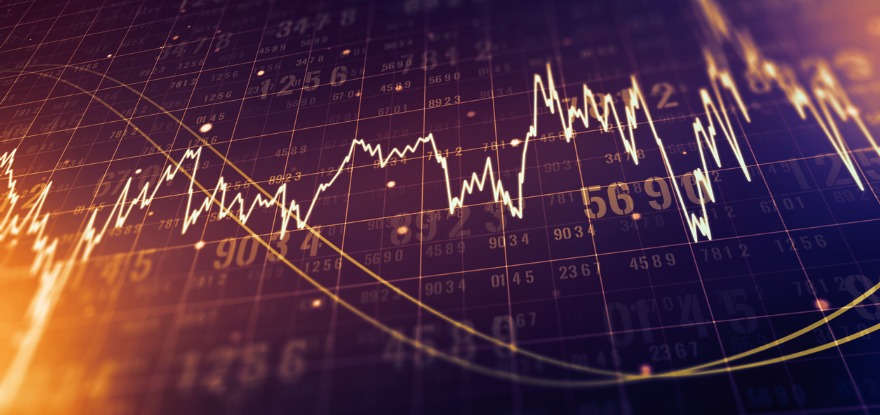Where Do Stocks Trade?

When you enter an order to buy or sell a stock, what happens next? Simply put, your registered financial professional—or, for self-directed investors, your brokerage firm’s system—must decide where to go to find someone who wants to sell their stock (if you want to buy) or buy your stock (if you want to sell). This is referred to as "routing" your order, and where the trade actually takes place is called the "execution venue."
The most familiar type of execution venue is a traditional exchange, such as the New York Stock Exchange or the Nasdaq Stock Market. However, other execution venues, including alternative trading systems (ATSs), single-dealer platforms (SDPs) and wholesalers, have risen in popularity in recent years. So, what's the difference between these venues? Read on to learn more.
Stock Exchanges
Stock exchanges are defined by the Securities Exchange Act of 1934 and generally include venues that bring together multiple buyers and sellers. Although set up differently from FINRA, national securities exchanges are also categorized as self-regulatory organizations (SROs), meaning they have rules of conduct that apply to their members. National securities exchanges must be registered with the U.S. Securities and Exchange Commission (SEC), and the SEC maintains a list of currently registered national securities exchanges.
Stock exchanges are also where companies go to "list" their shares, a process often referred to as "going public." Accordingly, when you see a reference to a "listed" stock, this means that the company has met the standards established by the listing exchange.
Transactions executed on exchanges are reported and published on the consolidated tape, an electronic system that provides real-time trade data for listed securities. Additionally, traditional exchanges are considered "lit" markets; quotation information is publicly displayed, and every market participant can take part in trading on both sides (buy or sell) by acting on the publicly available trading information.
Alternative Trading Systems (ATSs)
An alternative trading system (ATS) is an electronic execution venue that acts much like a stock exchange but isn’t an SRO. That means ATSs, like exchanges, bring together multiple buyers and sellers. But unlike exchanges, ATSs don’t have members (they have subscribers), nor do they take on regulatory responsibilities. Like an exchange, an ATS may trade listed stocks but, unlike an exchange, an ATS may also trade unlisted stocks—often called over-the-counter (OTC) equity securities—or fixed income securities, such as bonds, which typically trade in OTC markets.
Although not themselves SROs, ATSs are regulated by the SEC under Regulation ATS. Under this regulation, an ATS must be operated by a broker-dealer that is a FINRA member. As a result, ATSs are also subject to applicable securities laws and regulations, such as rules on disruptive or manipulative quoting and trading activity, and to oversight by FINRA.
Regulation ATS also imposes additional requirements on ATSs, including rules relating to the protection of confidential trading information and, for ATSs that trade large volumes of securities, fair access and systems requirements. The SEC maintains a list of all ATSs on its website.
“Dark pool” is a term often used to refer to an ATS that isn’t lit, meaning it doesn’t publicly display the buy/sell price or the number of shares traded, as described above. Dark pools, in general, were designed to anonymously handle large trades for institutional investors, and most retail investors won’t directly interact with dark pools. While dark pools aren’t required to publish quotations on their platforms, all ATSs—including dark pools—have a regulatory obligation to report information about trades that occur on their platforms.
All trade data for listed stock transactions occurring on ATSs, including dark pools, must be submitted to a FINRA Trade Reporting Facility (TRF) and is published on the consolidated tape along with trades occurring on exchanges. Transactions in unlisted securities also must be reported to FINRA. Firms must report trades in unlisted stocks to the FINRA OTC Reporting Facility (ORF) and trades in fixed income securities to the FINRA Trade Reporting and Compliance Engine (TRACE).
Single-Dealer Platforms (SDPs) and Wholesalers
Instead of routing your order to an exchange, your brokerage firm may execute your order itself or may route your order to an execution venue that isn’t registered as an exchange or an ATS. But all off-exchange, off-ATS activity must take place at a registered broker-dealer, so it’s still subject to SEC and FINRA oversight. And while these venues may be considered "dark," all trades must be reported to the appropriate trade reporting facility for the type of security being traded, just like trades occurring on an ATS.
These off-exchange, off-ATS execution venues include:
- SDPs: An SDP is an electronic trading platform operated by a broker-dealer where the firm itself acts as the principal counterparty for every transaction. Unlike an ATS, where subscribers' orders to buy and sell are matched with one another by the ATS, with SDPs, the broker-dealer operating the SDP is always the counterparty to any trade that occurs on that platform.
- Wholesalers: A wholesaler is a broker-dealer that acts as a market marker, a firm that actively quotes two-sided markets in a particular security, for other broker-dealers. Some broker-dealers, especially retail broker-dealers, route all or a significant portion of their orders to one or more wholesalers. A wholesaler's business is to execute those orders, which may involve executing the orders itself or further routing to other venues.
The Bottom Line
U.S. securities markets have grown more complex over the years. But while there are differences among types of execution venues, they all have an obligation to report post-trade data. All customer trades, regardless of where they’re executed, are subject to SEC and FINRA rules and regulations designed to protect investors, including those pertaining to best execution and more.
FINRA runs dozens of complex surveillance patterns to detect a wide variety of compliance issues and suspicious conduct to protect investors and to maintain the integrity of U.S. financial markets. In addition, FINRA provides centralized access to reports that can help you learn more about the order routing practices of the brokerage firm(s) you use.
FINRA also publishes equity volume data, including information on share volume and trade counts for off-exchange trades in listed stocks and OTC equity securities, as well as block trade information. Learn more about OTC transparency data and OTC trading.
Updated on 7/17/24



